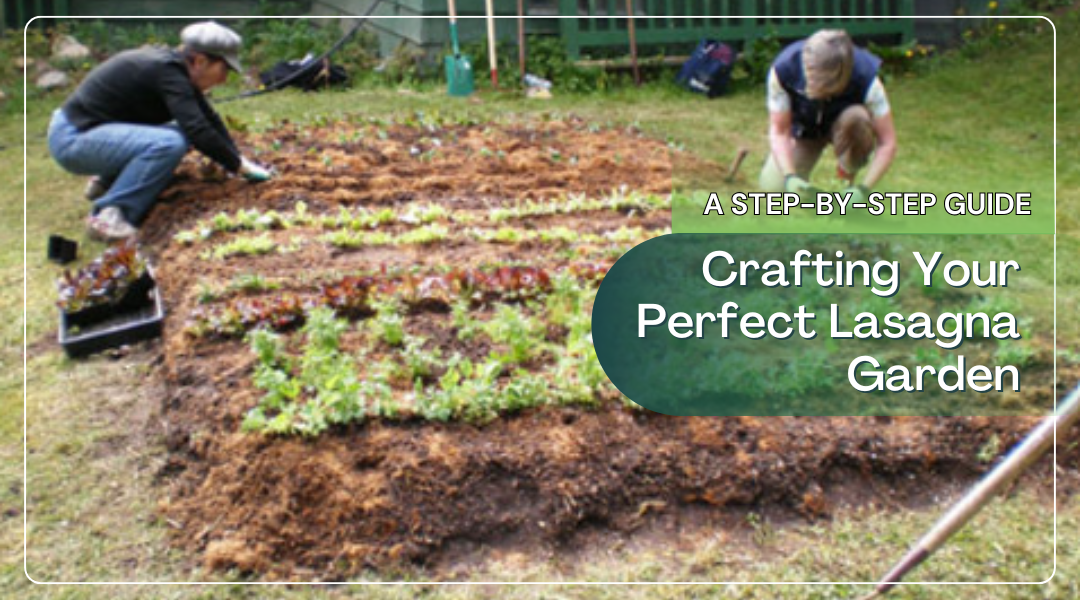Lasagna gardening might sound whimsical, but it’s one of the smartest ways to grow a thriving garden with minimal effort. By layering organic materials instead of digging and tilling, this method encourages natural decomposition, builds rich soil, and supports healthy plant growth. While lasagna gardening is forgiving, careful planning from the start sets the stage for a flourishing garden. From picking the right location to gathering the best materials and designing your garden layout, every step matters. Let’s walk through the process in detail.
Choosing the Ideal Location
Before you start layering your garden, think about where it will live. The right spot makes all the difference in plant growth, soil health, and ease of maintenance.
Sunlight: The Lifeblood of Your Plants
Plants need light to convert into energy through photosynthesis. Most vegetables, fruits, and flowering plants, such as tomatoes, peppers, zucchini, or sunflowers, thrive in full sun—at least 6 to 8 hours of direct sunlight daily. If your space is partially shaded, leafy greens, herbs, and certain flowers like impatiens or nasturtiums will still flourish.
Tip: Observe your chosen spot throughout the day to track sunlight patterns. Even a slight adjustment in placement can mean healthier, more productive plants.
Water and Drainage: Keep Moisture in Balance
Lasagna gardens naturally retain moisture, but proper drainage is still crucial. Avoid low-lying areas where water collects after rain, as this can lead to root rot. On the other hand, overly dry locations will require more frequent watering. Look for a spot where water drains evenly, creating a consistent, balanced environment for plant roots and decomposing layers alike.
Science in Action: Well-drained gardens produce healthier roots, fewer plant diseases, and better yields, as soil aeration and microbial activity remain optimal.
Space Planning: Room to Grow
One of lasagna gardening’s strengths is its adaptability to any space. From compact balconies to expansive backyards, this method works anywhere. Consider the growth needs of your plants: sprawling veggies like pumpkins or tomatoes need room to spread, while herbs and salad greens are more forgiving in tight spots. Proper spacing also simplifies watering, harvesting, and ongoing maintenance.
Pro Tip: Use companion planting strategies to make the most of your space. For instance, planting marigolds near tomatoes can help repel pests, while beans and corn naturally support each other’s growth.
Gathering Materials: Greens and Browns
Lasagna gardening thrives on a balance between nitrogen-rich “greens” and carbon-rich “browns.” These layers feed the soil, attract beneficial microbes, and maintain long-term fertility.
Greens (Nitrogen-Rich Materials)
Greens are your garden’s fuel, breaking down quickly to nourish plants. Fresh and moist, they help kickstart decomposition. Common greens include:
- Kitchen scraps: Vegetable peels, coffee grounds, tea leaves, and eggshells. These reduce food waste while enriching your soil.
- Grass clippings: Use fresh, untreated grass to boost nitrogen content. Avoid thick mats, which can hinder airflow.
- Herbivore manure: Well-aged manure from cows, rabbits, or chickens adds nutrients without the risk of harmful pathogens.
Pro Tip: Never use manure from carnivores, as it can carry bacteria that harm plants or contaminate produce.
Browns (Carbon-Rich Materials)
Browns give structure to your layers, decomposing more slowly to provide long-term nutrition. Examples include:
- Dry leaves: Shredded leaves from trees break down gradually, feeding soil over time.
- Cardboard and newspaper: Non-glossy paper works best, as glossy inks may contain chemicals.
- Straw, wood chips, and sawdust: These materials hold shape and create aeration, keeping soil light and fluffy.
Science in Practice: Aim for roughly a 2:1 ratio of browns to greens. Too much green can create a smelly, compact pile, while too much brown slows decomposition.
Designing Your Garden Layout
With your site chosen and materials in hand, it’s time to plan your garden’s structure. A thoughtful layout ensures efficient growth, easy access, and a visually appealing space.
Shape and Size
Lasagna gardens are versatile in shape—rectangular, circular, spiral, or even tiered beds. Keep accessibility in mind; you want to reach all areas without stepping on the soil. For smaller spaces, raised beds or containers are perfect, while larger gardens benefit from modular designs that break the area into manageable sections.
Integrating with Existing Landscapes
Lasagna gardening can transform neglected spaces. Use it to smother weeds, rejuvenate worn lawns, or integrate with existing flower beds. Urban gardeners can even adapt it vertically, stacking layers in containers or small raised beds to maximize limited space.
Pro Tip: Think of your garden as part of your overall landscape. Blending aesthetics with function makes maintenance easier and your space more enjoyable.
Conclusion: Laying the Groundwork for Success
A flourishing lasagna garden begins with thoughtful planning. Choosing the right spot, gathering the proper materials, and designing a practical, accessible layout creates the foundation for healthy soil, productive plants, and minimal maintenance. While this no-dig method is forgiving, a little foresight goes a long way in maximizing yields and enjoyment. Once your layers are in place, nature takes over—decomposing, enriching, and creating a thriving garden that keeps giving back season after season.
